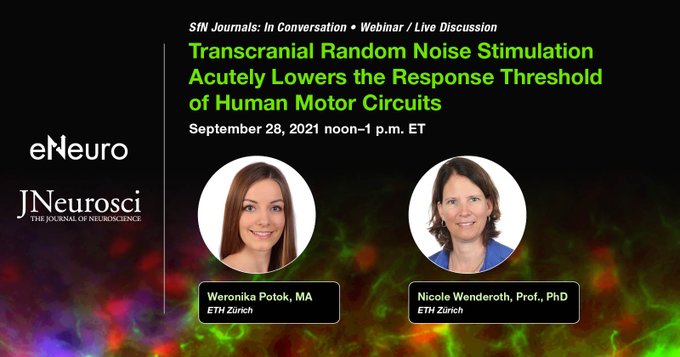BNA Face of the Fortnight: Dr Dorothy Tse
6th May 2024
External Event - 28th Sep 2021
Time: 5pm - 6pm (BST)
Online Event (exclusive for SfN members)

Below is the significance statement of Transcranial Random Noise Stimulation Acutely Lowers the Response Threshold of Human Motor Circuits, published on April 28, 2021, in JNeurosci and authored by Weronika Potok, Marc Bächinger, Onno van der Groen, Andreea Loredana Cretu, and Nicole Wenderoth.
A hallmark feature of stochastic resonance (SR) is that signal processing can benefit from added noise. This has mainly been demonstrated at the single-cell level in vitro where the neural response to weak input signals can be enhanced by simultaneously applying random noise. Our finding that transcranial random noise stimulation (tRNS) acutely increases the excitability of corticomotor circuits extends the principle of noise benefits to the neural population level in human cortex. Our finding is in line with the notion that tRNS might affect cortical processing via the SR phenomenon. It suggests that enhancing the response of cortical populations to an external stimulus might be one neurophysiological mechanism mediating performance improvements when tRNS is applied to sensory cortex during perception tasks.
Click here to register